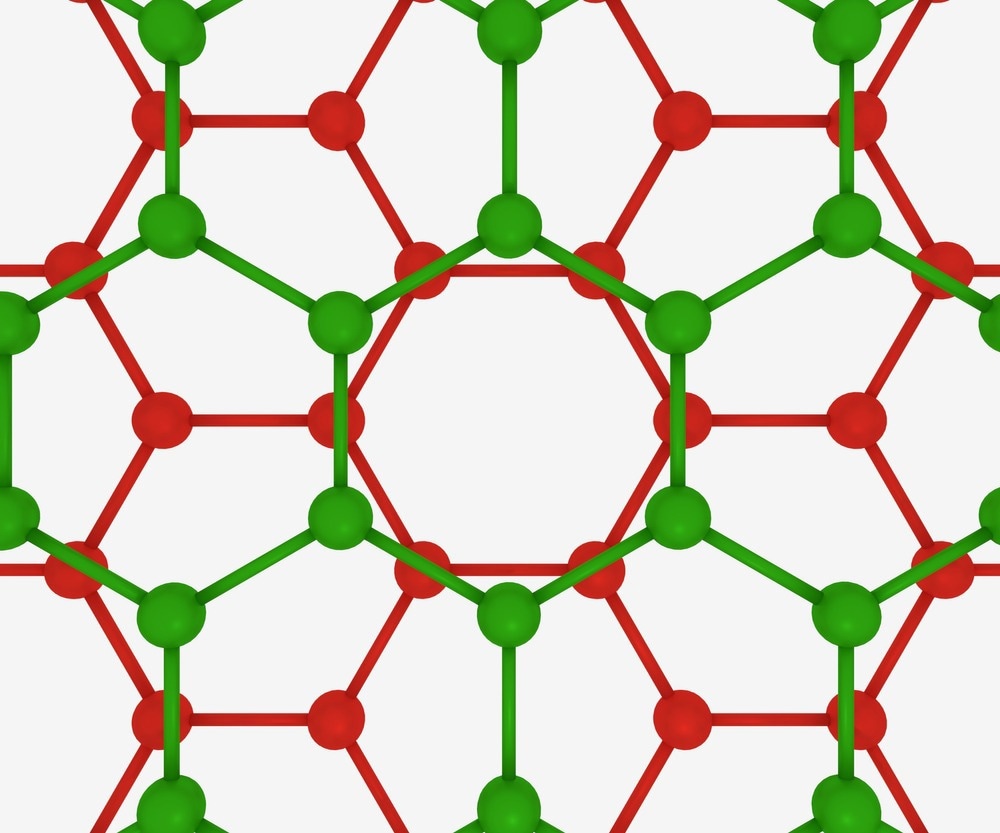By rotating graphene sheets with respect to one another at a right angle, the interaction of the electrons in the two layers can give rise to new electronic properties. When twisted to a specific magic angle, the stack exhibits behavior that is not observed in ordinary graphene, such as superconductivity.

Study: Corrugation-driven symmetry breaking in magic-angle twisted bilayer graphene. Image Credit: MZinchenko/Shutterstock.com
Although various physical properties were linked to the interlayer twist angle based on the previously predicted flat band structures, a few crucial observations, such as superconductivity-associated striped charge order and nematic phase, were missing in this preliminary model.
An article published in Communications Physics discussed partially filled states of flat-band structures induced by thermodynamically stable corrugation of the graphene bilayer via an interlayer twist. The magic-angle regime-based observation of the partially filled state of the flat band structure was associated with broken symmetry owing to the superconductivity in twisted bilayer graphene.
Furthermore, the difference between high and low corrugations explains the development of the vibrational spectra of twisted bilayer graphene, which is attributed to the twist angle. The observation in the present work that out-of-plane deformation modes promote partial filling of states in the Fermi energy regions may help cancel the disorder effects in the local twist angle. This suppresses the unconventional superconductivity and corresponding insulator behavior in magic-angle twisted bilayer graphene.
Magic-Angle Twisted Bilayer Graphene
A twisted bilayer graphene system around the magic angle is an ideal platform to realize various intriguing quantum phases, such as correlated insulators, quantum anomalous Hall states, and unconventional superconductivity.
Moiré flat bands were observed around a magic angle of 1.08 degrees in twisted bilayer graphene, which was theoretically determined using tight-binding models. Flat bands were observed because of electron-electron Coulomb interactions.
In addition, several exotic physical phenomena, including pseudogap states, striped charge order, and nematic phases related to high-temperature superconductivity, were observed under the magic-angle condition in twisted bilayer graphene.
In addition to the electronic behavior, the magic angle in twisted bilayer graphene also exhibits phononic effects. The insight in this area is that the crucial electronic characteristics are tuned by the interlayer twist angle, which adjusts the moiré superlattice created by regions of incommensurability and commensurability between the lattices.
Low twist angles cause the moiré superlattice to relax by producing large commensurate triangular AB/BA regions while the incommensurate AA and SP regions shrink. Numerous studies have been conducted on the effects of in-plane distortions on the electrical characteristics of twisted bilayer graphene.
Although prior continuum computations showed significant out-of-plane deformations, the role of out-of-plane deformation remains unclear. In this regard, the significance of out-of-plane deformation effects on the electronic structure of twisted bilayer graphene was recently demonstrated by the band flattening and relevant states observed in buckled monolayer graphene.
Symmetry Breaking in Magic-Angle Twisted Bilayer Graphene
The present study showed that in a low twist angle regime, the large out-of-plane deformations were thermodynamically stable if the periods of the moiré supercells were sufficiently large. Moreover, this study defined the correlation between corrugation and flat band partial filling and demonstrated symmetry breaking in magic-angle twisted bilayer graphene using a single-particle model.
The research findings illustrate the vibrational spectra observed experimentally in twisted bilayer graphene owing to the twist angle. The phase diagram of the magic-angle twisted bilayer graphene has coupled insulating and superconducting phases, which supports the unusual superconductivity of the system.
However, recent research has suggested that in the absence of a relative insulating phase, conventional superconductivity may also manifest in magic-angle twisted bilayer graphene. Moreover, the strain had a crucial role in symmetry breaking due to unusual superconductivity in twisted bilayer graphene.
Single particle physics demonstrated the pseudogap states and spectral weight transfer, providing proof of the energetically advantageous higher corrugation mode. These observations were analogous to similar phenomena in high-temperature superconductors.
Recently, coupled states and broken symmetry were observed in highly corrugated monolayer graphene using hexagonal boron nitride (hBN) as a substrate. Therefore, while attempting to explain the unique characteristics of superconducting states in magic-angle twisted bilayer graphene, the large out-of-plane deformation should also be considered.
As it moves the Fermi level away from charge neutrality, the bending mode of corrugation is also expected to have an impact comparable to the unscreened electric field caused by the angle disorder in magic-angle twisted bilayer graphene. The use of this kind of deformation might take the role of applying a back-gate voltage to adjust the produced electric field.
Conclusion
Overall, the present study suggests that additional research is necessary to fully understand the impact of excessive corrugation in twisted bilayer graphene. This effect can be observed experimentally by applying electric fields or using substrates to which the twisted bilayer graphene has varied adherence.
Thus, the degree of corrugation in the twisted bilayer graphene system can also be regulated, raising an intriguing potential of manipulating superconducting states in magic-angle twisted bilayer graphene.
Reference
Rakib, T., Pochet, P., Ertekin, E., Johnson, H.T. (2022). Corrugation-driven symmetry breaking in magic-angle twisted bilayer graphene. Communications Physics. https://doi.org/10.1038/s42005-022-01013-y
Disclaimer: The views expressed here are those of the author expressed in their private capacity and do not necessarily represent the views of AZoM.com Limited T/A AZoNetwork the owner and operator of this website. This disclaimer forms part of the Terms and conditions of use of this website.